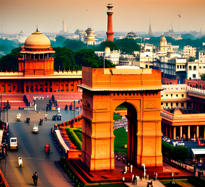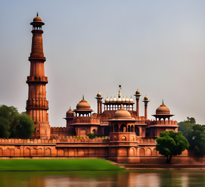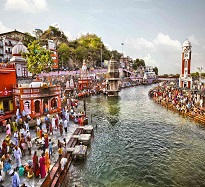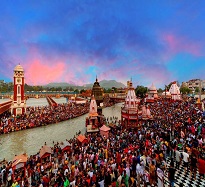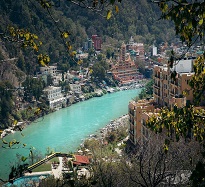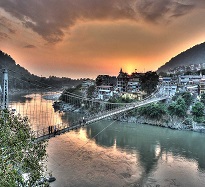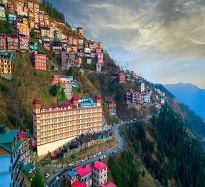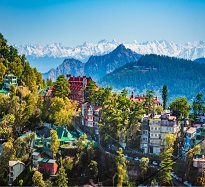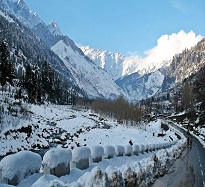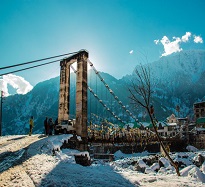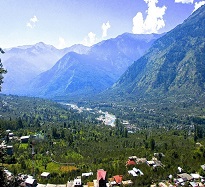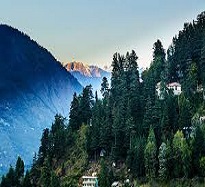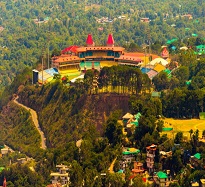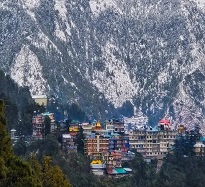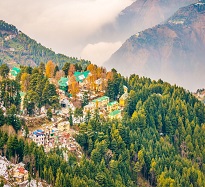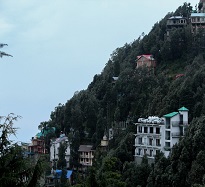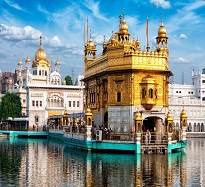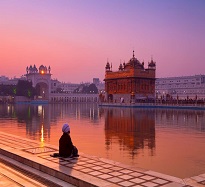Duration
14 Days, 13 Nights
Category
North India Trip
About North India
North India, also known as Northern India or simply the North, is a region in India that occupies 72.6% of the country’s total land area and 75% of its population. The region is home to a diverse range of cultures, languages, and religions. The Indo-Aryans, a branch of the Indo-European peoples of Central Asia, migrated from Central Asia through the north-west and settled in North India between 2000 and 1500 BC.
The geography of North India is varied, ranging from the Indo-Gangetic Plain and the Himalayas to the Thar Desert, the Central Highlands, and the north-western part of the Deccan plateau. Multiple rivers flow through this region, including the Ganges, Yamuna, Indus, and Narmada rivers.
North India is known for its rich history and cultural heritage. The region has been ruled by various dynasties throughout history, including the Maurya Empire, Gupta Empire, Mughal Empire, and British Raj. The region is home to several UNESCO World Heritage Sites such as the Taj Mahal in Agra, Qutub Minar in Delhi, and Fatehpur Sikri in Uttar Pradesh.
The region is also known for its cuisine. Some popular dishes include chole bhature, butter chicken, tandoori chicken, biryani, and samosas.
North India is a popular tourist destination due to its rich history, cultural heritage, and scenic beauty. Some popular tourist destinations include New Delhi, Shimla, Manali, Amritsar, Haridwar, Kullu, Dharamshala, Dalhousie, Rishikesh, and Varanasi.
Facilities

Tour Operator

Hotel Booking

Car Rental
Itinerary
Day 1
New Delhi
New Delhi is the capital of India and a part of the National Capital Territory of Delhi (NCT). It is situated in the north-central part of the country on the west bank of the Yamuna River, adjacent to and just south of Delhi city (Old Delhi) and within the Delhi national capital territory. New Delhi is the seat of all three branches of the Government of India, hosting the Rashtrapati Bhavan, Sansad Bhavan, and the Supreme Court.New Delhi is a municipality within the NCT, administered by the NDMC, which covers mostly Lutyens’ Delhi and a few adjacent areas.The municipal area is part of a larger administrative district, the New Delhi district. Although colloquially Delhi and New Delhi are used interchangeably to refer to the National Capital Territory of Delhi, both are distinct entities, with both the municipality and the New Delhi district forming a relatively small part of the megacity of Delhi. The National Capital Region is a much larger entity comprising the entire NCT along with adjoining districts in neighbouring states, including Ghaziabad, Noida, Gurgaon and Faridabad.
Day 2
Haridwar
Haridwar is a city located in the Indian state of Uttarakhand. It is one of the seven holiest places in Hinduism and is known as the “Gateway to God”. The city is situated on the banks of the river Ganges and is one of the first places where the river touches the plains after flowing through the mountains. Haridwar is also the entrance to four major centers in Uttarakhand, namely Kedarnath, Badrinath, Gangotri, and Yamunotri. The city has a rich history that dates back to Vedic ages. According to Hindu mythology, Haridwar was created with a drop of nectar spilled from kundalini being carried by Garuda after the Samudra Manthan. Haridwar houses several temples devoted to various deities. Ganga Snan is one of the major attractions in Haridwar. It is believed that a dip in the holy water of Ganges washes away all sins and gives a chance to lead a fresh life, despite all ill deeds and sins. The city also has several tourist attractions such as Harki-Paudi, Chandi Devi Temple, Mansa Devi Temple, Sati Kund, Neel Dhara Pakshi Vihar, and Rajaji National Park
Rishikesh
Rishikesh is a city located in the Indian state of Uttarakhand. It is situated on the right bank of the Ganges River and is a pilgrimage town for Hindus, with ancient sages and saints meditating here in search of higher knowledge. The city has numerous temples and ashrams built along the banks of the river. It is known as the “Gateway to the Garhwal Himalayas” and “Yoga Capital of the World”. Rishikesh is a vegetarian-only and alcohol-free city. The city has hosted the annual “International Yoga Festival” since 1999. Rishikesh is also a starting point for traveling to the four Chota Char Dham pilgrimage places: Badrinath, Kedarnath, Gangotri, and Yamunotri
Day 3
Shimla
Shimla is the capital of the Indian state of Himachal Pradesh and is situated in the northwestern part of the country. It is a popular tourist destination known for its Victorian architecture, which is reflected in certain areas of the Mall and The Ridge. The city lies northeast of Chandigarh on a ridge of the Himalayan foothills, at an elevation of about 7,100 feet (2,200 metres). Shimla was declared as the summer capital of British India in 1864 and remained an important political centre after independence. The city is home to several buildings that are styled in the Tudorbethan and neo-Gothic architectures dating from the colonial era, as well as multiple temples and churches. Major city centre’s attractions include the Shri Hanuman Jakhu (Statue), Jakhu Temple, Viceregal Lodge, Christ Church, Mall Road, The Ridge and Annadale.
Day 4
Manali
Manali is a town located in the northern end of the Kullu Valley, formed by the Beas River, in the Indian state of Himachal Pradesh. It is situated at an elevation of about 6,730 feet (2,050 meters) and is approximately 338 miles (544 kilometers) northeast of the national capital of New Delhi. Manali is a popular tourist destination in India and serves as the gateway to the Lahaul and Spiti district as well as the city of Leh in Ladakh. The town has an ancient temple dedicated to the sage Manu, after whom it is named. Manali is known for its cool climate and snow-capped mountains, offering respite to tourists escaping scorching heat of the plains. Major attractions include the Shri Hanuman Jakhu (Statue), Jakhu Temple, Viceregal Lodge, Christ Church, Mall Road, The Ridge and Annadale
Kullu
Kullu is a town located in the Kullu district of the Indian state of Himachal Pradesh. It is situated on the banks of the Beas River in the Kullu Valley, about 10 kilometers north of Bhuntar airport. The valley is known for its temples, hills covered with pine and deodar forests, and sprawling apple orchards. The course of the Beas river presents a succession of hillside settlements studded amongst forests of deodar that tower above pine trees on the lower rocky ridges. The town offers truly magnificent views with the river Beas running through it. Kullu Valley is sandwiched between the Pir Panjal, Lower Himalayan and Great Himalayan Ranges, located in Northern India, 497 kilometers away from the capital of India. The region has a rich history dating back to ancient Hindu literary works of Ramayana, Mahabharata and the Puranas. During Vedic period several small republics known as “Janapada” existed which were later conquered by various empires such as Nanda Empire, Mauryan Empire, Shunga Empire, Gupta Empire, Pala Dynasty and Karkoṭa Empire. After a brief period of supremacy by King Harshavardhana, the region was once again divided into several local powers headed by chieftains, including some Rajput principalities, these principalities were later conquered by Mughal Empire, Maratha Empire, Sikh Empire.
Day 5
Dharamshala
Dharamshala is a city in the Indian state of Himachal Pradesh. It is located in the upper reaches of the Kangra Valley and is surrounded by dense coniferous forest consisting mainly of stately Deodar cedar trees. The city has been selected as one of a hundred in India to be developed as a smart city under Indian Prime Minister Narendra Modi’s flagship “Smart Cities Mission”. Dharamshala is also the winter capital of Himachal Pradesh and serves as administrative headquarters of the Kangra district. It is home to the Tibetan Government-in-exile and is known worldwide for being the home of the Dalai Lama. The city has a population of around 62,596 people and covers an area of 27.60 km
Day 6
Dalhousie
Dalhousie is a hill station located in the Chamba district of Himachal Pradesh, India. It is situated on five hills and has an elevation of 1,970 m (6,460 ft) above sea level. The town was named after The Earl of Dalhousie, who was the British Governor-General in India while establishing this place as a summer retreat. The town is spread over an area of 14 sq. km. and is built on five hills - Kathlog, Patreyn, Tehra, Bakrota and Balun. It has a humid subtropical climate with torrential rainfall during late summer and early spring due to monsoonal influence. The city sees over 90 frost days per year and 20-30 snowy days. The average night temperature during the season is around 4 °C (39 °F), while the maximum is close to 11 °C (52 °F). Dalhousie attracts many tourists, including highly experienced mountaineers
Day 7
Amritsar
Amritsar is a city located in the northwestern part of India, in the state of Punjab. It is the largest and most important city in Punjab and is a major commercial, cultural, and transportation center. The city is situated about 15 miles (25 km) east of the border with Pakistan and is home to several important landmarks, including the Golden Temple, which is one of the holiest Sikh shrines. Amritsar is also known for its ancient history, which dates back to the Indus Valley Civilization. The city has a rich cultural heritage and is famous for its cuisine, which includes dishes such as Amritsari Kulcha, Chole Bhature, and Lassi.
